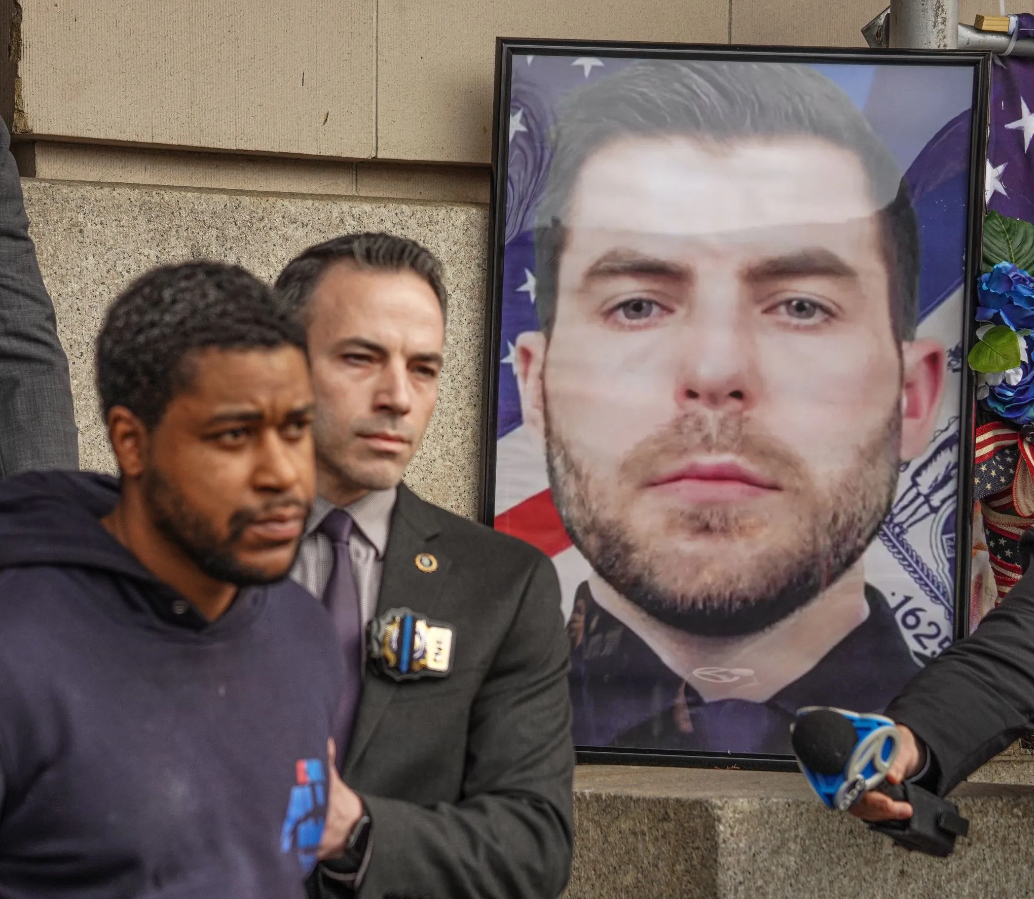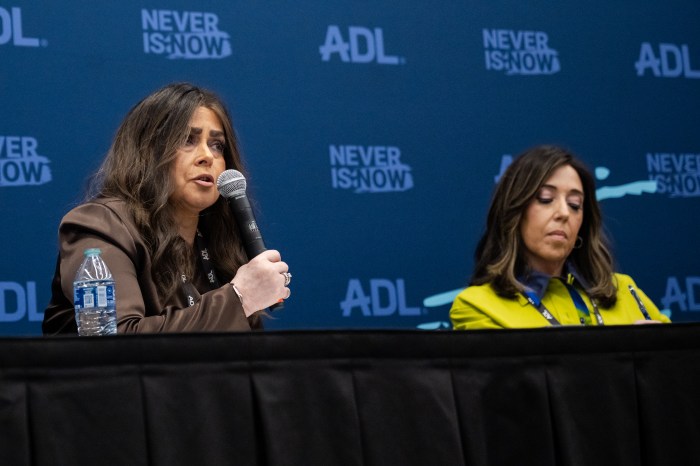BY LESLIE T. SHARPE | I first met Larry Selman when I moved to our neighborhood in 1978. Larry passed away peacefully, his great heart finally failing, last month.
I would see him patrolling the streets, his close-cut, pebbly hair (I always teased him it was too long), thick glasses and rotund shape, reminiscent of one of those gawky kids in Gary Lawson’s cartoons. He would be accosting friends and strangers alike, with “Hey, Mister / Miss, can I see you?” — with the goal, I would eventually learn, of raising money for any number of worthy charities.
Invariably, I would flee to the other side of the street, his affect alarming me — and this was my own admitted ignorance — as he was clearly developmentally disabled. “Call me retarded,” Larry would later insist, “it sounds better.”
Then, one spring day at a Mets game, I saw him roaming the stands at Shea in his Miss Piggy mask, delighting kids and adults alike. Inevitably, on the way home, he sat down beside me on the subway.
“I know you!” he announced. “Wanna go to a game?”
He was, in a word, irresistible, and Larry and I would go to many Mets games together, getting the cheap seats in the upper deck. But Larry would always make a beeline to the box seats on the first-base line, where he would find his friend Gil, then the head groundskeeper; miraculously, we would end up sitting behind the home dugout, with Larry calling out to the players, who always waved back.
Larry knew everyone, and everyone knew Larry.
He had a way of bridging so many worlds — which I chronicled in two pieces I wrote for New York Newsday, when I was a columnist for that paper, and which Larry loved — he delighted in seeing himself in print: From the borough of birth, Brooklyn, whose accent he carried so well (“I shoulda stood in bed…”) and which he often joked he would return to (he could be so deadpan!), vowing to live under the boardwalk at Coney Island, where he would have the best view of the annual Mermaid Parade (“I like to watch the pretty girls…”); to Greenwich Village, where his devoted Uncle Murray settled him after Larry’s parents died, so many years ago, in a tiny, rent-controlled apartment on Bedford St. (such as were plentiful then), and which would make possible his life as an independent, fully engaged and productive member of our community; to Hollywood, California, which claimed Larry as its own when our neighbor Alice Elliott’s film “The Collector of Bedford Street,” which so movingly documents Larry’s life in the Village, received an Academy Award nomination for Best Short Documentary.
Larry took that in stride, as he critiqued his fellow stars (Jack Nicholson, among them), for their generosity (Larry was always collecting for good causes), as he often did politicians (Republicans, he reported, were “cheap”).
But even before he was known as “The Collector,” Larry for many years had been raising funds for the Bedford-Barrow-Commerce Block Association, tirelessly working every spring to sell raffles for Ye Olde Village Fair, and also to “shake down” — as one local merchant described it to me, with a laugh — businesses for raffle prizes, as he also did for the B.B.C.’s annual holiday party.
Larry adored playing Santa at that party, and as recently as Christmas 2011, though he could no longer get up the stairs, played a new role, “Downstairs Santa,” where he greeted people on their way in to the festivities. In earlier years, he would dress as Santa during the holidays and traipse around the Village, offering good cheer to passersby. And he would invariably stop at local firehouses, dispensing candy to firefighters, whom he loved. As a kid he had “buffed” — been adopted as a mascot by a local Brooklyn firehouse, and had been allowed, from time to time, to ride up on the engine.
Larry loved baseball, cats and dogs, firefighters, his friends and neighbors, and especially raising funds for all sorts of causes. He loved life, and lived it so fully. I don’t know anyone who has done more with life — who has lived up to every ounce of his or her potential — the way Larry did.
Which doesn’t mean that Larry was a saint. He wasn’t. He could be such a pain — stubborn, contrary, cranky, irascible and just plain difficult. E. M. Forster would have described him as a “round character.” But, none of us, as frustrated as we could get with him, ever stopped loving him. Because, first and foremost, Larry was so lovable — his generosity of heart, his honesty, his devilish sense of humor, that infectious laugh of his, his never-ending phone calls. On more than a few of these, he would try to convince me that Leo Durocher was returning to manage the Mets — I would get back at him by threatening to become a Yankees fan! But mostly because he was ours, a member of the family — and family, at its best, is about unconditional love.
Kathy Donaldson, B.B.C. president, has been the tireless force behind the block association’s success as an award-winning neighborhood organization that has managed to do so much good for so many, individuals and local nonprofits alike. Kathy remarked to me recently about how Larry never took no for an answer, when asking people for contributions to any of his causes.
“He once said to me, he didn’t care how many people said no, because he knew, that eventually one person — just one — would say yes,” Kathy recalled.
So many of us get so discouraged. Larry, as he once told me, was called “simple” by some people when he was growing up. But he never stopped believing, in his causes and in his fellow humans, and he never stopped trying. And he succeeded — in raising money, in helping others, in making friends, in living a wonderful life. And most of all, he succeeded in making a difference.
It was the Daily News, in its obituary of Larry, that referred to him as an “icon” of the Village. As I referenced that, at the start of this remembrance, I could hear Larry, who would have loved all these tributes, say, “What’s an icon? Is that good?”
Yes, Larry, it’s very good — it’s very good indeed.

















